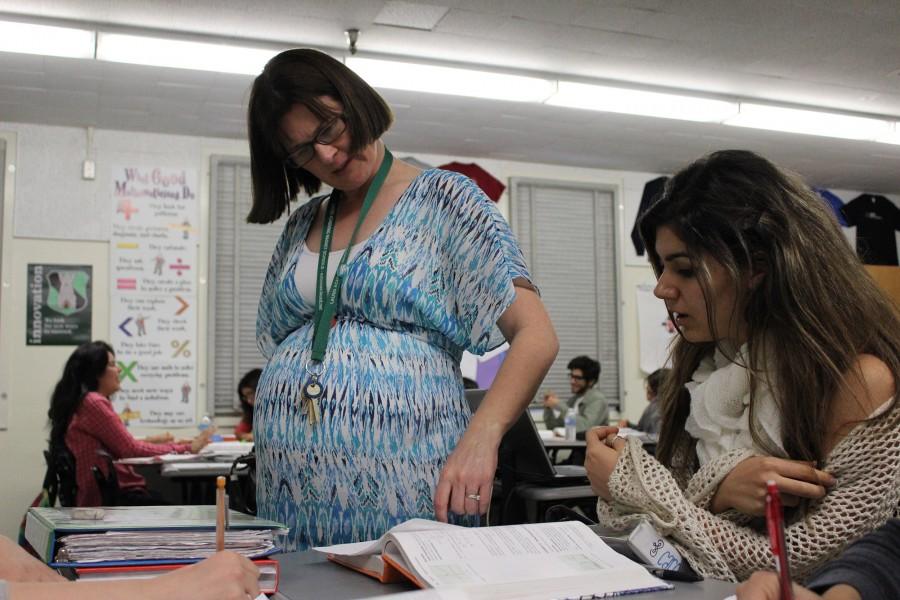Practice of flipping the classroom becomes more widespread
Math teacher Leslie Hicks helps junior Caroline Maroutian with a math problem during class. Flipping the classroom allows teachers to help more during class time because students take their notes at home. Photo by Jake Dobbs.
November 5, 2014
For Leslie Hicks, flipping the classroom has greatly changed her Calculus AB class, as students have an easier time learning the material and putting it to use.
“I can’t tell you how improved Calculus performance is this year over my past classes,” Hicks said. “And it’s not that I have geniuses this year, it’s the students are getting more of a chance to practice.”
It’s Hicks’ first year implementing this new type of learning style, originally hearing about it from colleagues who mentioned how their students are more successful when the classroom is flipped. So with her students success in mind, she decided to give it a try.
Flipping the Classroom is a different way of teaching core classes. It essentially means learning core content material outside of the classroom, so class is spent doing problems out of the textbook, homework sheets, or working on released questions from the college board.
Hicks uses a program called Touchcast. This program incorporates video of her speaking with PowerPoints, PDFs and an electronic marker to write out math problems. If a student is feeling stuck or doesn’t understand something, they can rewind the video to repeat a section until they fully understand it.
If a student was having a difficult time understanding the lesson and raises their hand in the middle of a lecture, the student is now taking up class time to understand the concept. Now with Touchcast they can ask the teacher during class without taking up everyone else’s time.
“It works way better because the students can take all their notes at home, have more time to do homework and if they don’t understand something or have a question they can ask the teacher,” senior Beatriz Castro said. “That way they’ll have a better understanding of the class.”







